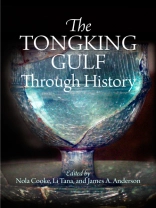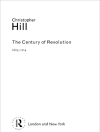Since 2005, a series of significant developments has been unfolding in the area of the Tongking Gulf under the rubric of an ambitious project called ‘Two Corridors and One Rim.’ Proposed by Vietnam in 2004 and enthusiastically embraced by China, the project is designed to link their shared shores and hinterlands by superhighways and high-speed rail. An area that had seemed a backwater for two hundred years has suddenly become a dynamic engine of growth.
Yet how innovative are these developments? Drawing on fresh historical insights and recent archaeological research in northern Vietnam and southern China, The Tongking Gulf Through History reveals that this region has long been a center of cultural, political, and economic exchange. From a historical point of view, contributors argue, the Gulf of Tongking has come full circle. Inspired by the Braudelian vision that regionality arises from long-term human interactions, essays avoid state-centered approaches of nationalist histories to focus on local communities throughout the Gulf. In doing so, they reveal a complex pattern of interrelationships and geopolitical factors that has shaped the gulf region for over two millennia.
The first half of the volume covers the era from the Neolithic to the tenth century, when an independent state emerged from old Chinese Jiaozhi, or modern northern Vietnam; the second surveys the nine centuries that followed, in which only two states came to share the maritime shores of the Tongking Gulf. Together, the essays illuminate how millennia of recurring human interactions within this geographical space have created a regional ensemble with its own longstanding historical integrity and dynamics.
Tabella dei contenuti
Preface
Introduction. The Tongking Gulf Through History: A Geopolitical Overview
—Li Tana
PART I. THE JIAOZHI ERA IN ARCHAEOLOGY AND HISTORY
1. Textile Crafts in the Gulf of Tongking: The Intersection of Archaeology and History
—Judith Cameron
2. Jiaozhi (Giao Chi) in the Han Period Tongking Gulf
—Li Tana
3. Han Period Glass Vessels in the Early Tongking Gulf Region
—Brigitte Borell
4. ‘The People in Between’: The Li and Lao from the Han to the Sui
—Michael Churchman
PART II. THE JIAOZHI OCEAN AND BEYOND (TENTH TO NINETEENTH CENTURIES)
5. ‘Slipping Through Holes’: The Late Tenth- and Early Eleventh-Century Sino-Vietnamese Coastal Frontier as a Subaltern Trade Network
—James A. Anderson
6. Van Don, the ‘Mac Gap, ‘ and the End of the Jiaozhi Ocean System: Trade and State in Dai Viet, Circa 1450-1550
—John K. Whitmore
7. The Trading Environment and the Failure of Tongking’s Mid-Seventeenth-Century Commercial Resurgence
—Iioka Naoko
8. Chinese ‘Political Pirates’ in the Seventeenth-Century Gulf of Tongking
—Niu Junkai and Li Qingxin
9. Chinese Merchants and Mariners in Nineteenth-Century Tongking
Vu Duong Luan and Nola Cooke
Notes
Glossary
List of Contributors
Index
Acknowledgments
Circa l’autore
Nola Cooke is English-Language Editor of the journal Chinese Southern Diaspora Studies and Visiting Fellow at the Centre for the Study of the Chinese Southern Diaspora at The Australian National University. Li Tana is Senior Fellow at the School of Culture, History, and Language and Director of the Centre for the Study of the Chinese Southern Diaspora at The Australian National University. James A. Anderson is Associate Professor of History at the University of North Carolina, Greensboro.












